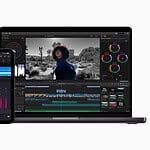One feature people often wonder about with their iPhones is whether or not it can tell you the temperature in your room. Everyone knows Apple has a built-in weather app that tells you the temperature outside, but is there any way to find out how hot (or cold) it is in the area your iPhone is. Unfortunately, the answer is no, the iPhone itself does not have a dedicated temperature sensor for environmental readings. It can interface with other hardware to get you the information you need but like interfacing with body temperature monitors or external sensors, but the phone itself cannot measure the room temperature.

Using Your iPhone to Gauge Temperature
While iPhones have internal temperature sensors, they aren’t designed to measure room or body temperature directly. Here’s what you need to know about your iPhone and temperature monitoring:
Internal Temperature Monitoring
Your iPhone monitors its internal temperature. This information helps prevent overheating, which could harm the device’s components. If your iPhone gets too hot, you may see a temperature warning on the screen, and some features might become temporarily limited.
How to Check Your iPhone’s Battery Health
You can access some temperature-related information in your iPhone’s settings. This is primarily focused on your battery’s health:
- Go to Settings: Open the Settings app on your iPhone.
- Tap on Battery: Select the “Battery” option.
- Battery Health: Choose “Battery Health” to view information. Your iPhone’s maximum battery capacity and its ability to handle peak performance may be affected by temperature.
Indirect Temperature Readings
While your iPhone can’t directly measure room temperature, certain apps might give you estimates based on location data:
- Weather Apps: Many weather apps provide local temperature readings based on your GPS location. These come from external weather stations, not your iPhone.
External Options for Temperature Measurement
Here are some alternative ways to measure temperature:
- Smart Thermometers: These devices connect to your iPhone via Bluetooth and allow for accurate body temperature measurement.
- Infrared Thermometers: These can measure the surface temperature of objects, giving you a general idea of how warm or cold something is.
Important Note: Don’t rely on your iPhone for critical temperature readings, especially those related to health or safety. Use dedicated instruments for accuracy.
Key Takeaways
- iPhones lack built-in environmental temperature sensors but can display temperature readings through connected devices.
- Remote temperature sensors and smart thermometers can inform users of room and body temperatures via iPhone.
- The Health app and third-party apps enhance an iPhone’s temperature monitoring abilities for health and environmental purposes.
Understanding iPhone’s Temperature Sensing Capabilities
iPhones have sensors that monitor internal temperatures to safeguard the device. For external ambient temperature readings, users often need to rely on third-party solutions.
Internal Versus External Temperature Sensors
iPhones come with built-in sensors designed primarily to track internal heat levels, especially around the battery and processor. These sensors prevent damage from overheating. iPhones lack built-in sensors for external ambient temperature measurement.
How iPhone Monitors Its Own Heat Levels
The internal sensors of an iPhone keep tabs on the device’s temperature and trigger protective protocols if it gets too hot. Users can view their device’s health including temperature impacts in the Settings app under “Battery.”
Leveraging Third-Party Accessories and Apps
To measure external temperatures, iPhone users can turn to accessories like the SensorPush Thermometer or smart thermometers from brands like Kinsa, connecting via Bluetooth or Wi-Fi. These devices often come with an app for temperature monitoring.
Integration with Health Applications
Third-party temperature apps and accessories can sync with the Apple Health app. Users can track body temperature with devices like the Kinsa Smart Ear or QuickCare thermometers, integrating the data for personal health analysis.
Choosing The Right Temperature Monitoring Solutions
When selecting a temperature monitoring solution for an iPhone, consider factors such as Bluetooth range, Wi-Fi capability, and user reviews. Products like the Temp Stick offer remote temperature monitoring, and options are available on Amazon and other retailers.
Please note that for any product-specific uses, compatibilities, or instructions, the user is advised to refer to manufacturers’ guidelines or resources to ensure accurate operation.
IPhone in Health and Environmental Awareness
The iPhone serves as a valuable tool for monitoring both health and environmental conditions. It leverages various sensors and apps to keep users informed about their surroundings and physical state.
Improving Room and Body Temperature Measurements
The iPhone can connect to external sensors like the Kinsa smart thermometer for precise body temperature readings. These thermometers sync with your iPhone via Bluetooth. Users can also monitor room temperature through compatible remote temperature monitors that send data to iPhone apps.
Alerts and Notifications for Temperature Changes
Users can set alerts for significant temperature changes. These notifications can warn about potential overheating of the device or rapid changes in room temperature, which may affect comfort and safety.
Enhancing Lifestyle With Temperature-Sensitive Features
By integrating temperature data with the Apple Health app, the iPhone helps track health information over time. This can include tracking ambient temperature impacts on physical activity, as recorded by the Apple Watch.
iPhone’s Role in the Ecosystem of Smart Devices
The iPhone acts as a hub in the smart device ecosystem. It connects to gadgets measuring humidity, air quality, and ambient temperature. The connections often use Wi-Fi or Bluetooth, syncing data with apps that manage health and environment for better user experience.
Frequently Asked Questions
This section answers common queries about the iPhone’s capabilities regarding temperature measurement and monitoring.
How can I view the ambient room temperature using my iPhone?
iPhones don’t have built-in temperature sensors for detecting ambient temperature. Users can view the room temperature by accessing the Weather app for outdoor conditions or use third-party sensors that connect to the iPhone via Bluetooth for indoor measurements.
Is it possible for an iPhone to measure body temperature?
An iPhone cannot measure body temperature directly. Users need a separate smart thermometer that pairs with the iPhone and an associated app to read and track body temperature.
What steps are involved in checking the temperature of an iPhone?
To check the temperature of an iPhone 13, observe its performance and look for overheating warnings. There is no direct method to measure the device’s temperature. If the phone feels hot or displays a warning, turn it off and let it cool down.
How can I be alerted if my iPhone reaches a high temperature?
iPhones will display a temperature warning screen when the device becomes too hot. If this warning appears, it is essential to let the device cool down before continuing to use it.
Does iOS 17 provide a feature to monitor the iPhone’s temperature?
No, iOS 17 does not include a specific feature for users to monitor their iPhone’s internal temperature.
Can the iPhone function as a standalone thermometer to measure temperature?
The iPhone cannot function as a standalone thermometer for measuring temperature. For accurate temperature readings, use an external temperature sensor or thermometer that interfaces with the iPhone.







